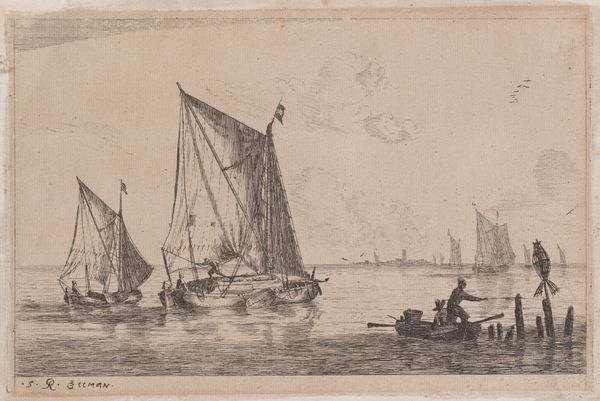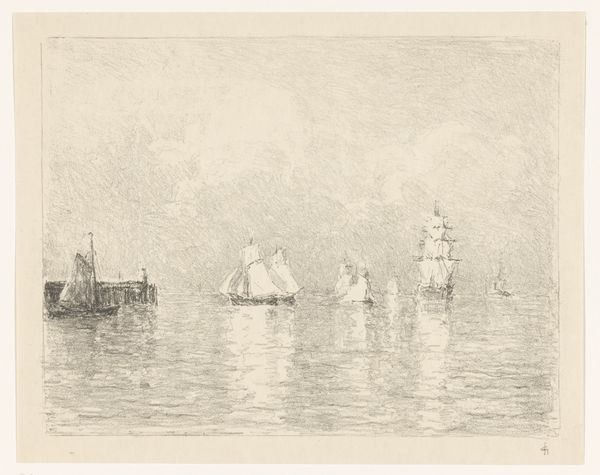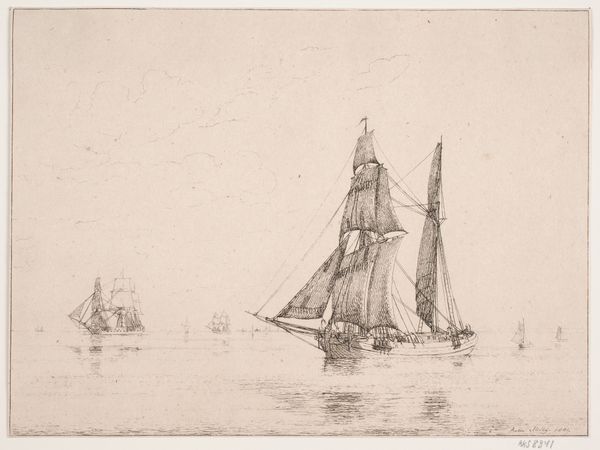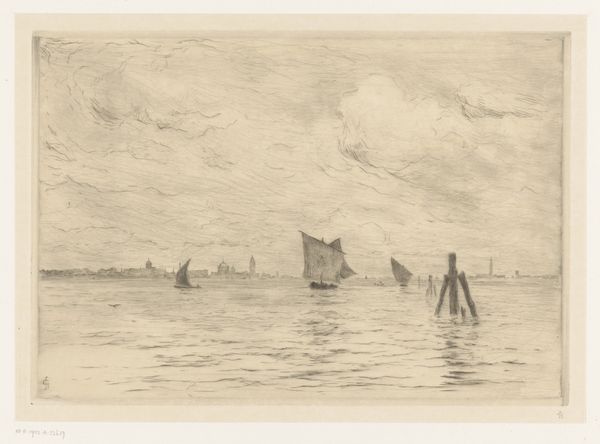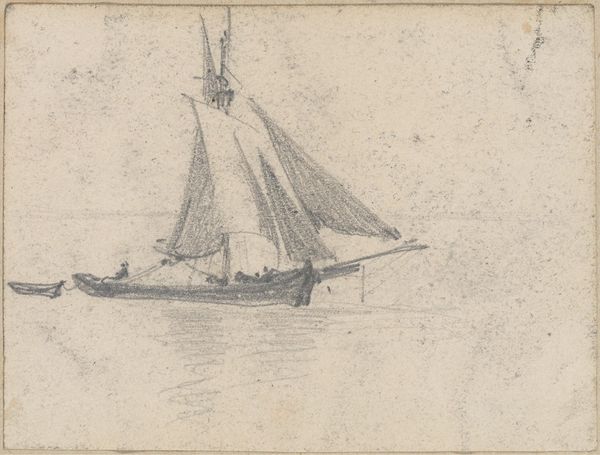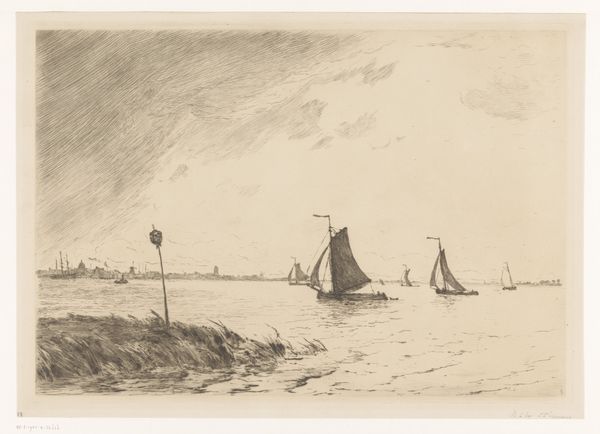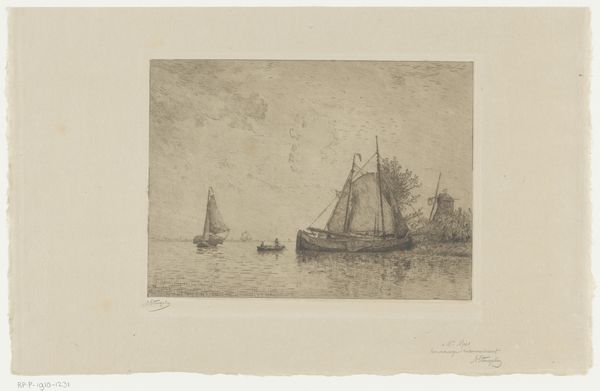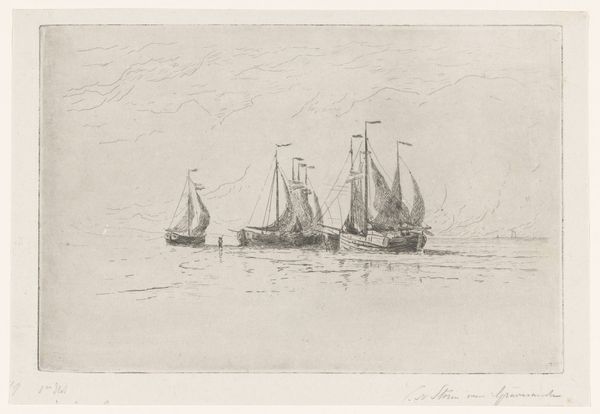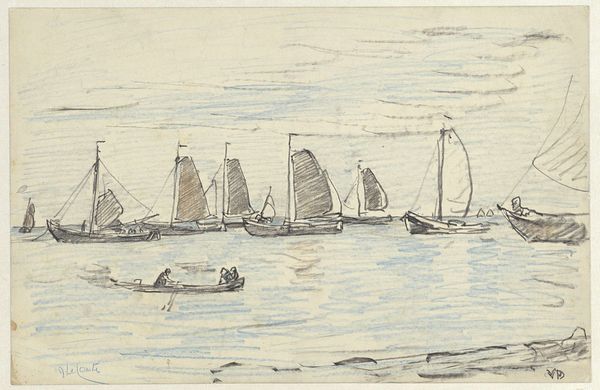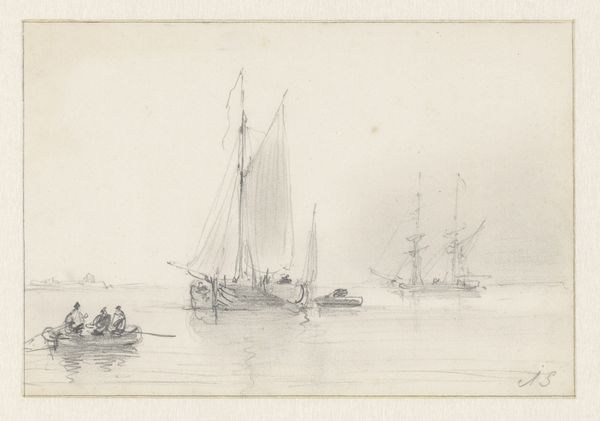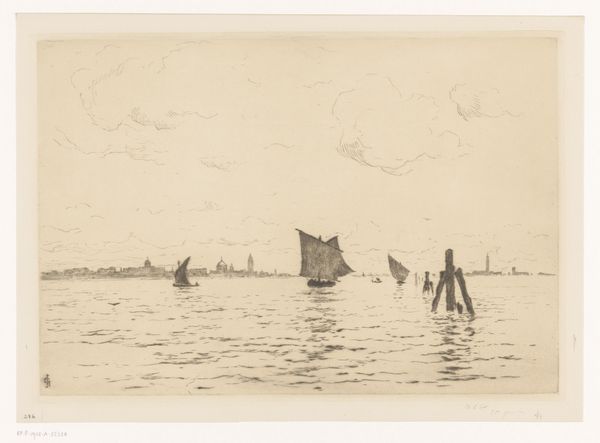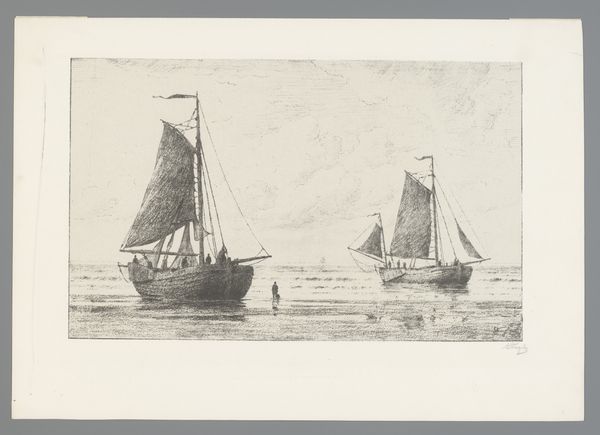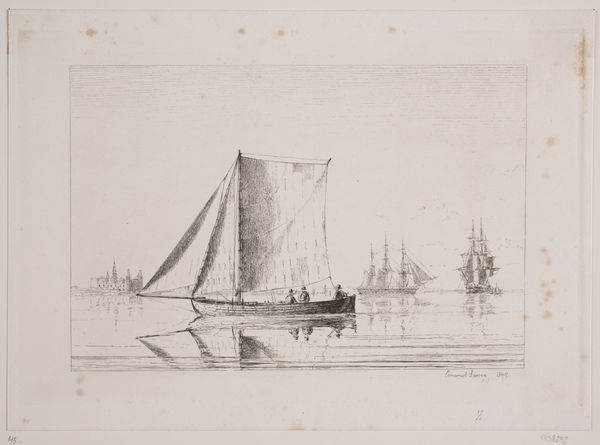
Copyright: Rijks Museum: Open Domain
Curator: This drawing, “Tekening uit archief Philip Zilcken,” by Alphonse Stengelin, made sometime before 1927, depicts a serene waterscape rendered with ink on paper. Editor: It strikes me immediately as fragile. The thin lines, the almost ghostly quality of the clouds... it's as if it could dissipate any moment. A whisper of a memory on toned paper. Curator: Indeed. The river scene itself is quite evocative. Note how Stengelin uses these delicate lines to create a sense of depth, with these barely-there lines of distant shores populated with more boats. Water and boats held great symbolic importance across many cultures; often representing journeys, transitions, and the subconscious mind. Here, the two seem to meet on the paper. Editor: And what kind of pen are we looking at, or more accurately, the artist was working with? You know, the way the ink pools slightly at some of the strokes suggests perhaps a quill, rather than a more modern nib. Also, what sort of labor went into the artist rendering something "fragile"? It looks like an almost effortless exercise of pure line work and craft in creating illusions on paper, and from humble beginnings. Curator: That's a great question, I find the use of what feels like very subtle imagery throughout particularly compelling: the soft, undefined cloud shapes; the mirroring reflections on the water that imply a deeper world beneath, things which invite our imaginations. These shapes possess emotional echoes within us. They’re primordial in many respects. Editor: Interesting. The reflections also provide almost as much structural information in the piece. The image on top seems mirrored by labor invested. How was the paper sourced? How was it prepared? I feel we are losing the ability to account for all these factors with newer artistic practices and materials. Curator: I agree. In that light, it feels important that this work invites reflection, on many levels. Editor: Yes. Something for our contemporary moment that calls out the history in every choice of line and shape. It reminds me that everything comes from something tangible in our lived experience.
Comments
No comments
Be the first to comment and join the conversation on the ultimate creative platform.
